Thinking About Storytelling Week?
National Storytelling Week takes place from 27th January to 4th February 2024 and is a celebration of the power of sharing stories. To facilitate primary school teachers supporting their learners in how to think about the stories they are reading, we wanted to share how a few of the metacognitive tools from our Thinking ‘Toolbox’ might be used. We hope you’ll find them helpful in allowing your learners to explore whichever stories you are reading, both in storytelling week and beyond…
Before we look at some of the tools, a word on metacognition itself:
Metacognition is commonly understood as being ‘thinking about thinking’, but more recent research in this area suggests that this may be an oversimplification.
The Education Endowment Foundation’s (EEF) ‘Metacognition and Self-Regulation Guidance Report’ defines metacognition as being:
“about pupils’ ability to monitor, direct, and review their learning. Effective metacognitive strategies get learners to think about their own learning more explicitly, usually by teaching them to set goals, and monitor and evaluate their own academic progress … self-regulated learning is the interaction of cognitive and metacognitive processes as well as motivation.”
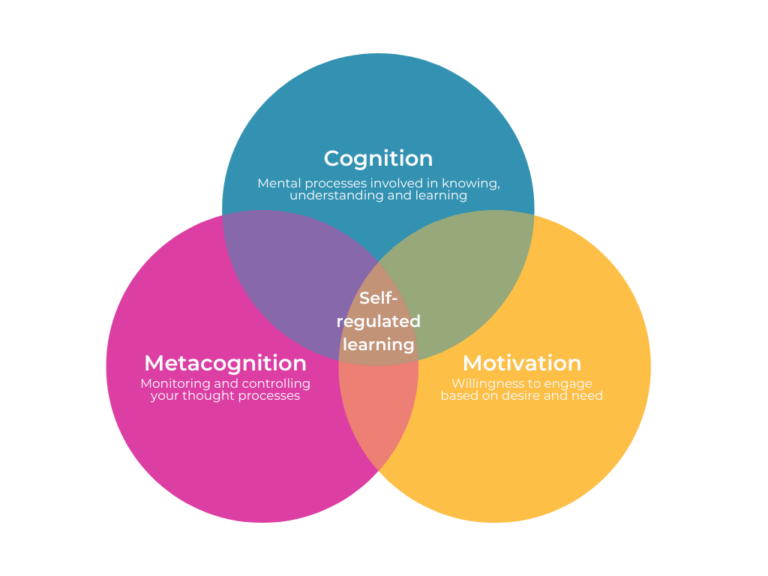
Talk to a Thinking Matters Expert
Metacognitive Tools for Storytelling Week:
The methods we use to help learners build their metacognitive toolkit can enhance the long-term impact on learning. For example, by making thinking ‘visible’ in the classroom, we can help learners develop the thinking strategies to engage confidently in the task at hand. Here are a couple of metacognitive visual tools that are excellent in promoting thinking when it comes to stories.
Visible Thinking Routines: are routines to deepen pupils’ thinking and to help make that thinking “visible.” Thinking routines help to reveal pupils’ thinking to the teacher and helps them identify and reflect on the thinking processes they are using.
Thinking Frames: are visual scaffolds to help structure thinking. Utilising Dual Coding Theory, pupils can scaffold thinking and learning with increasing confidence, skill and dexterity, just the same way as their use of physical tools for multiple everyday tasks can be developed.
Many Visible Thinking Routines may be useful when storytelling. The See-Think-Wonder routine for example provides an interesting method for introducing pictures/images or real objects/artefacts as a stimulus for discussion and response, and which could lead to storytelling orally or in writing. The stimulus would be shown to the children, who would initially describe exactly what they see, before reflecting on what they think about the stimulus and what it might make them wonder, or what questions they may have. The Beginning-Middle-End Thinking Routine could be used to further support this activity, which is described as a routine for “harnessing the power of narrative to observe connections, patterns, and meaning”.
The Thinking Frames, or metacognitive visual tools also offer useful scaffolds for children’s storytelling and response to stories. As stories are generally based on a narrative of events in order of time, the Sequencing Frame may be used to support the retelling of stories, from familiar tales in the early years to summarising key events in more complex stories in later years.
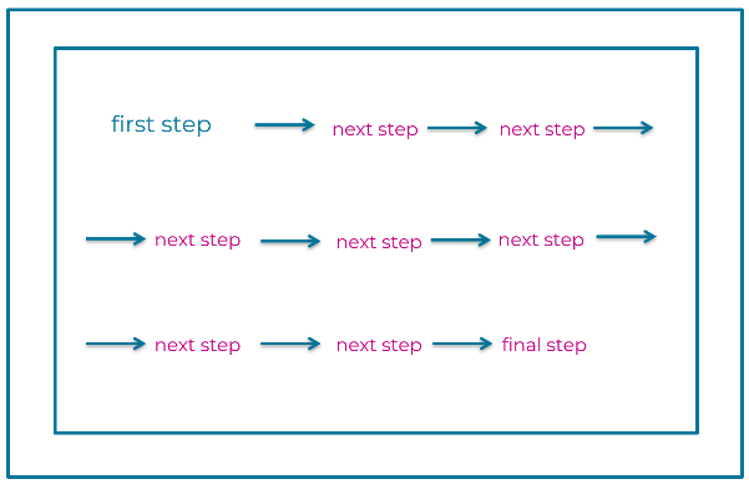
In the early years, where oral storytelling is an important stage of language and literacy development, large card arrows may be laminated to provide a visual prompt for children as they work collaboratively to recount events or retell stories. Or the Sequencing Frame can be reproduced vertically and placed on the floor to enable individual children to tell their story as they ‘walk’ each step.
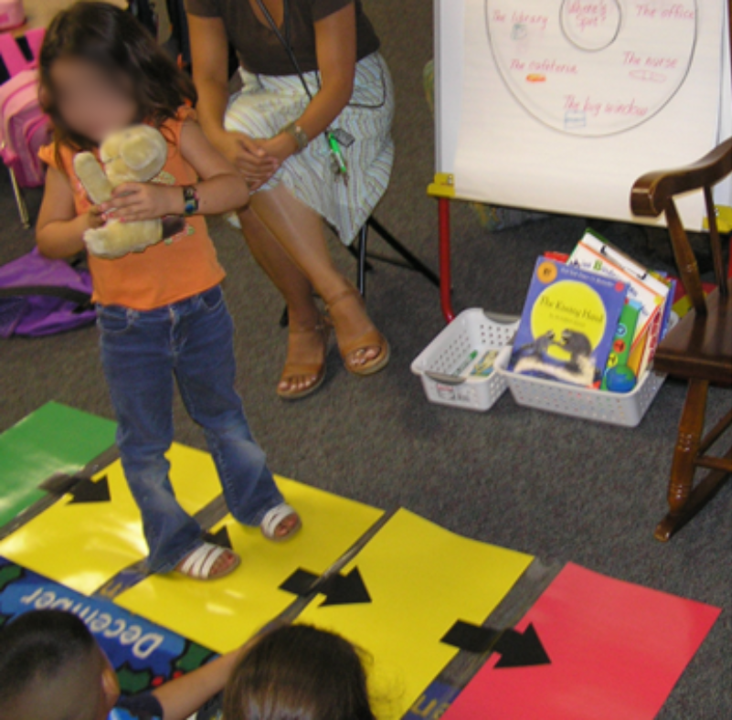
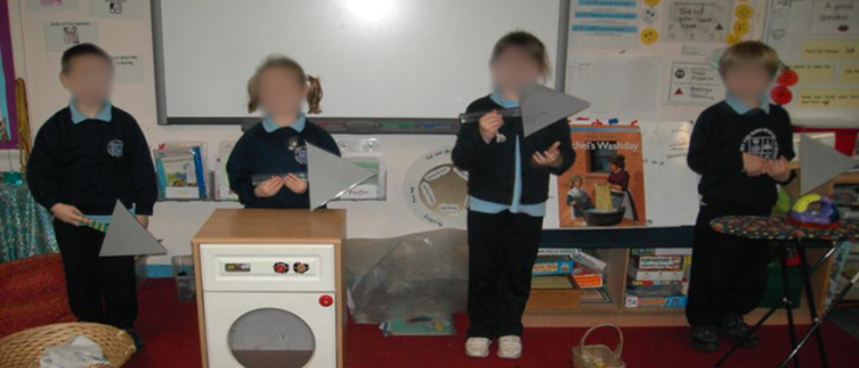
As they move towards key stage one, teacher modelling of use of a Sequencing Frame to retell a story could be followed by opportunities for children to cut and paste key events from a story in order.
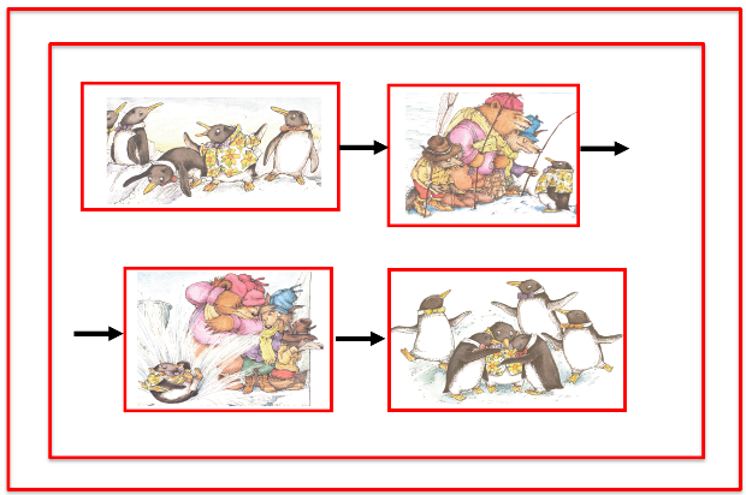
As children begin to create their own stories, simple templates can be provided in which they draw pictures or write simple sentences to identify the beginning, middle and end of a story. As children develop skills as independent writers, the Sequencing Frame becomes a useful scaffold to note the key elements of the plot of a story they wish to create.
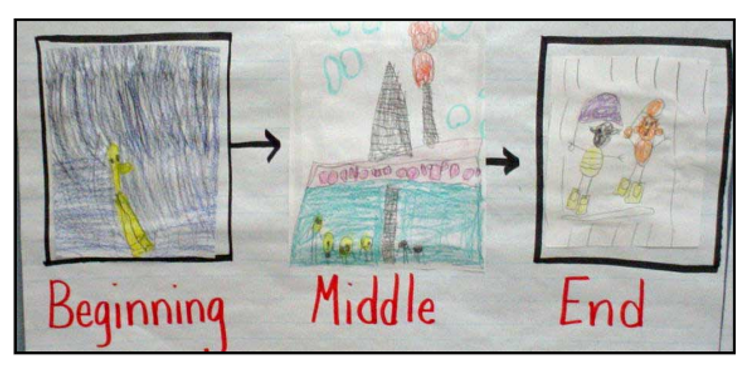
The Defining Frame can be used in a whole group session to record children’s understanding of the features of effective stories, which can then be displayed as for reference in the classroom. At a later stage, children may be asked to create their own Defining Frame identifying the features of effective stories as an assessment.
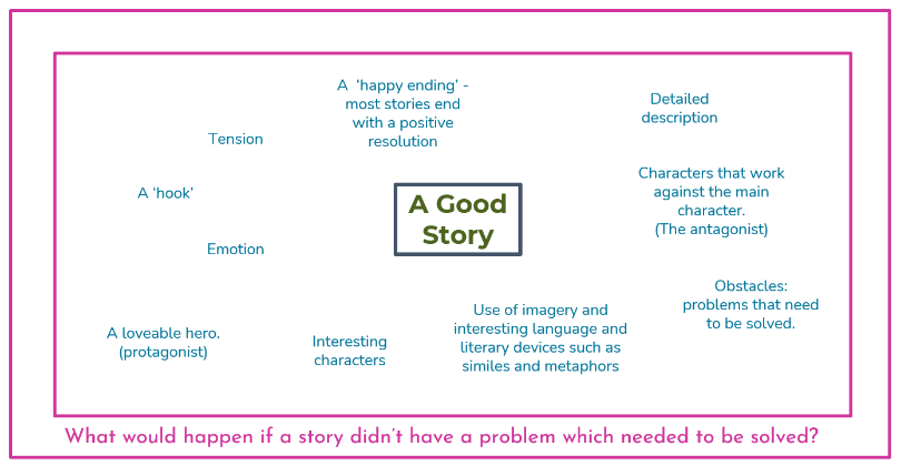
The Defining Frame is also useful when generating lots of ideas to stimulate children’s creativity at the start of a storytelling or story writing lesson.
As children explore characterisation in stories, the Describing Frame is a particularly useful tool to explore their comprehension and enrich their use of descriptive language. In the early years, teachers may model completion of the Describing Frame for main characters in stories read to or by the children. As children’s capacities for independent writing develops, they will take increasing responsibility for creating their own Describing Frames and may use this technique to shape characters for stories they are telling or writing. In the examples below, note how the Reflective Lens might be used to assess children’s comprehension of the story and requires them to justify their responses.
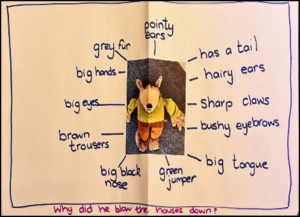
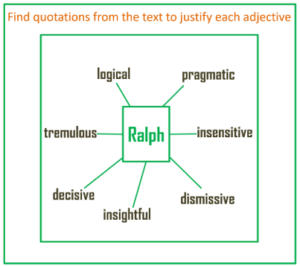
The Step Inside Visible Thinking Routine is also useful for older children to explore characterisation by tasking them to step inside the role of a character in a story they have heard or read, or who they may be writing about. Three core questions guide students in this routine:
- What can the person or thing perceive?
- What might the person or thing know about or believe?
- What might the person or thing care about?
Thinking Frames might be used in the context of the story of The Hare and the Tortoise, one of Aesop’s fables for example by:
Assessing children’s memory of the main characters using a Defining Frame.
A Reflective Lens question could be asked challenging the children to identify their favourite and character and to explain their reasons why.
*Reflective Lens: for generative, higher order, probing or metacognitive questioning
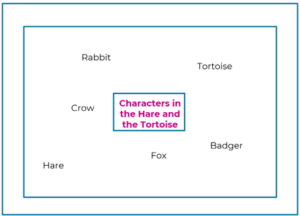
Retelling the main parts of the story using a Sequencing Frame, with the Reflective Lens question asking to confirm understanding of the moral of the fable.
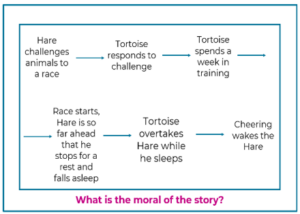
The Describing Frame could be used to prompt children’s analysis of either of the two main characters in the story.
The Defining Frame could then be used to task the children with capturing ideas for elements which they might include in their own fable, with key events then noted in a Sequencing Frame.
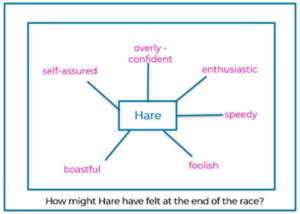
We hope you find some of the above useful. Enjoy storytelling week and if you want to know more about how to embed the use of metacognitive visual tools then please contact us.